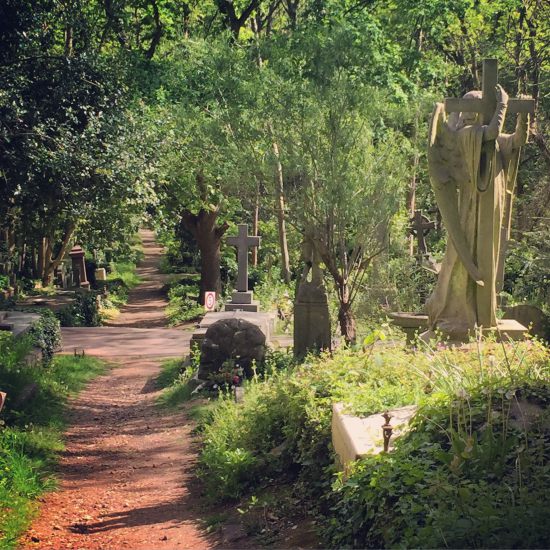St. Anthony’s feast day is January 17
For this week’s cemetery post, I decided to write about Saint Anthony of Egypt. Why? Because not only is his feast day January 17th, but he just so happens to be the patron saint of gravediggers. I figure that also makes him the patron saint of those of us who enjoy exploring historic graveyards!

Non-Catholics celebrate feast days, too
I’m not Catholic, but plenty of non-Catholics celebrate feast days. Case in point: St. Patrick’s Day. No one bats an eye if you’re a protestant, Jewish, or even an atheist who decides to drink green beer and wear a shirt saying “Kiss me, I’m Irish!” on March 17th, right? It’s simply a fun holiday for anyone who wants to celebrate.
What is a Catholic feast day, anyway?
Which got me to wondering, since I was raised Presbyterian, what exactly is a feast day? To answer that question, I popped over to the Catholicism for Dummies website (seemed a good fit!) where I learned the following:
What is a Catholic Feast Day? “The Catholic Church assigns one date out of the year for each and every canonized saint — known as the saint’s feast day. The saints are remembered on their individual feast days with special mention, prayers, and possibly a scripture reading. Some saints’ feasts are only celebrated in the particular saint’s town or country. Others are internationally celebrated.”

More than one St. Anthony
There are several different saints named “Anthony” in the Catholic tradition. I often see statues of the one known as St. Anthony of Padua in graveyards. They are not the same guy! So just to clarify, the saint I’m writing about here is: St. Anthony of Egypt, who is also known as St. Anthony the Abbott.
Why is St. Anthony of Egypt associated with cemeteries?
The reason St. Anthony of Egypt is considered the patron saint of undertakers, gravediggers and cemetery workers is because he sold everything he owned and lived in a tomb at the start of his life’s work. Somewhere along the line he healed a sick pig (the world’s first cured ham? Couldn’t resist that one…), and the two became lifelong friends.
For this reason, St. Anthony of Egypt is often shown with his porcine companion seated nearby. There’s even an ancient Catholic tradition linked to the feast day for St. Anthony of Egypt which involved bringing your farm animals to the church for a blessing. That must have been lively!
St. Anthony of Egypt statues not common in graveyards
Ironically, despite his association with cemeteries, statues of this particular St. Anthony are not a common site in historic graveyards. While researching this post, I poured through all the photos I’ve taken of cemetery statues and did not find a single one depicting St. Anthony of Egypt. If you ever see one in while exploring a historic graveyard, tell me about it and send the photo my way. I’d love to see it!
The photo at the top of this post, however, DOES depict St. Anthony of Egypt. What makes it unique, however, is that it is the only Michelangelo painting in the western hemisphere. To top it off, he painted it as a teenager! (For more about the Michelangelo painting, visit this post: The Torment of St. Anthony in Fort Worth, Texas.)
FREE Cemetery Symbols Guide:
Would you like a FREE guide to historic cemetery symbolism? If so, click the image below:

Any idea if Michelangelo signed that one? If I remember from art history correctly, he only signed 6 works (one being The Pieta) because he didn’t think most of his work was worthy of God.
Interesting! I have no idea if he signed this one or not. I’ll have to look into that now! (And I can certainly see why he signed La Pieta. I got to see it in person a few years ago and it gave me chills!)